Introduction
There is no doubt that evolution is an essential part of the life of any system. Biological life, technological progress, and even the economic sector are subject to metamorphosis. The latter implies a progressive development of enterprises based primarily on the negation of stability. The idea underlying this critical report defines the need for change and its management for the enterprise’s growth. In particular, throughout this paper, it is repeatedly recognized that business companies that do not tend to change and adapt to rapid market conditions have no room for growth. Consequently, quality change management is a vital component of a successful organization.
The Dubai real estate agency Betterhomes LLC has been chosen as the company for analysis in this report, demonstrating quality growth and developing a human resource management system. The report provides a detailed rationale for selecting this company as a target and demonstrating key commercial and organizational metrics. In addition, SWOT and PESTEL competitive analyses are performed to identify the need for quality change.
A theoretical discussion of the importance and significance of organizational transformation, along with a discussion of two change management models, form the core of this report. The models chosen were the Levin system and the 7S methodology, the latter of which was used to develop a strategic plan with all stakeholders in mind. Finally, the last section provides recommendations that will enable Betterhomes LLC to implement change more effectively.
Company Choice and Background for Change
The “Why Choose Us” section on the official website of Betterhomes, a Dubai-based real estate agency, contains a phrase that defines the staff’s holistic approach to doing business. More specifically, the company provides services ranging from short-term residential leasing to commercial property sales and management. Such a tremendous breadth of services offered unequivocally characterizes the challenging development path that the company, originally represented only by Linda Mahoney, has taken in 35 years.
Formed in 1986, the small real estate services firm has reached tremendous heights during its existence. Its development is directly related to the evolution of the technological and economic spheres of social life. Therefore, the company’s chronology includes such milestones as creating its first website, obtaining the official Dubai license for services, creating its fleet of vehicles, participating in conferences, and printing a magazine covering all the trends and news of the real estate market (Doesn’t time fly, 2021). Every step overcome in adapting to a changing market — and even getting ahead of the competition — resulted in total annual revenue of $57.5M (Betterhomes, 2021).
Such numbers seem like an incredible achievement for a company of only several hundred employees. It is a mistake to think that by reaching these financial and reputational heights, Betterhomes has stopped changing. On the contrary, by intelligently managing its company’s structure, in 2019-2021, the agency’s leadership bought out two strong Arab brands and launched its offshoot, designed for suburban real estate. That said, in 2020, positive changes are evident in client base growth (+30%) and leasing transaction growth (+11%). More detailed data, formed in a visually appealing way, are presented in Figures 1-3. The above facts reflect the aspiration to change the company’s corporate culture, and therefore it was not a mistake to choose Betterhomes for this report.
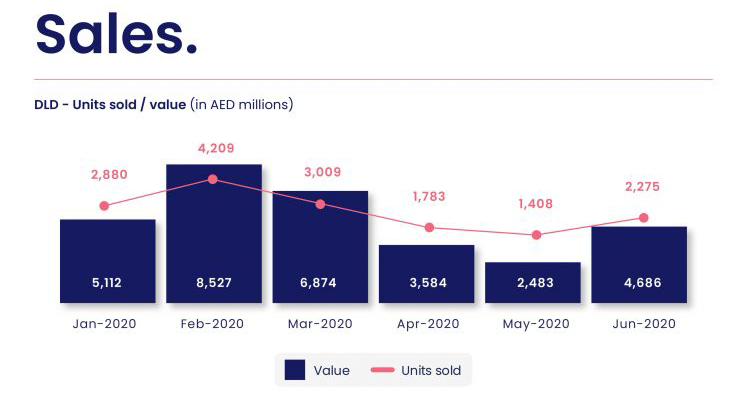
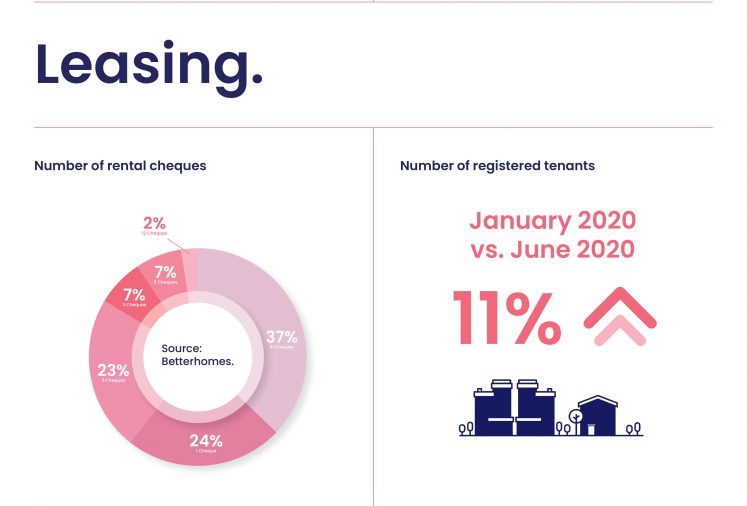
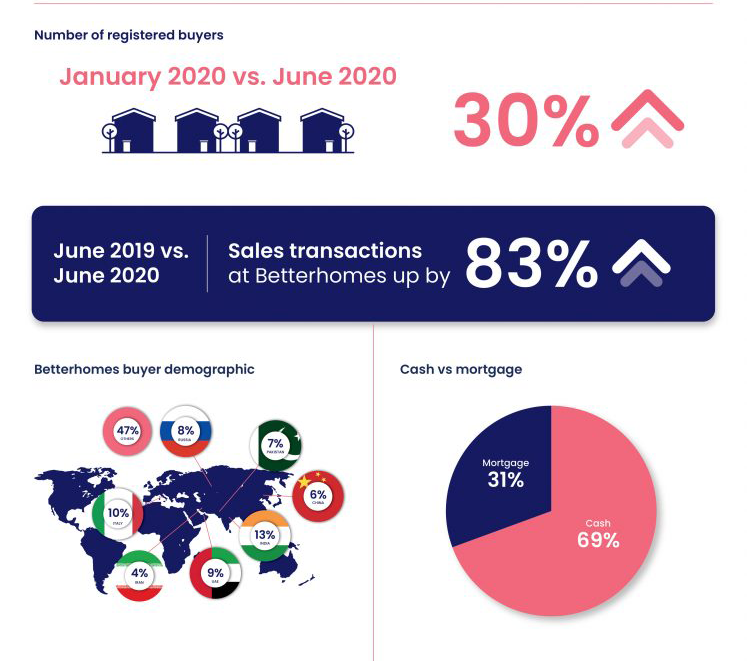
SWOT Analysis
It is widely known that change management in a company should begin with a competitive analysis that helps to identify strengths and weaknesses. There are a grandiose number of systematic models and practices in economics that are used to perform analysis, but SWOT is considered the classic one (Gürel and Tat, 2017). SWOT analysis involves a thoughtful review of a company based on a critical examination of positive and negative perspectives. SWOT matrix for Betterhomes LLC is given below.
Based on the data obtained, it is evident that on the whole, Betterhomes LLC has a serious competitive advantage and holds up well in the market of real estate services. In addition, the company has a favorable environment for both working with new clients and retaining current employees. For instance, according to Betterhomes LLC’s LinkedIn profile, the average time on the job is 7.6 years, which is a considerable significant number for a city of millions (Betterhomes LLC, 2021). Nevertheless, it should be noted that the company does not have any standout detail that could be a serious foundation in the event of dramatic changes in the industry market. In particular, in the event of a new business leader in the real estate sector or a change in local life’s sociopolitical structure, Betterhomes LLC risks being at a disadvantage because it lacks a significant competitive advantage.
In addition, the SWOT matrix identified a list of six relevant areas that could be useful to the company in the context of organizational development. As a rule, such recommendations were related to the improvement of existing internal processes. However, loyalty system formation and expansion beyond Dubai’s borders into the Gulf region and beyond may be the very core that will allow Betterhomes LLC to strengthen its competitive strength (Dubey and Sahu, 2019). Ultimately, this SWOT analysis is a relevant and necessary tool for the following sections revealing change management issues.
PESTEL Analysis
Among the tools of competitive analysis, special attention should be paid to the PESTEL mechanism, which allows a review of external factors that impact the business. It is paramount to recognize that, in reality, the performance, efficiency, and competitiveness of a business are not only determined by its internal processes but also by external pressures (Kenton, 2020). The organization itself is a dynamic, open system, producing an exchange of assets with the environment. In this sense, PESTEL is a useful tool to delineate the company’s external pressures and consider them individually.
From the above PESTEL matrix, it becomes evident that Betterhomes LLC is an open, exchangeable system dependent on the outside world’s trends and laws. Two important observations follow from this. First of all, the connection with external factors imposes certain requirements and obligations on Betterhomes LLC, non-compliance, leading to an agency’s economic and reputational crisis. On the other hand, industry market exposure and presence in the regional trading arena means Betterhomes LLC’s potential for competitiveness (Kratzer, Meissner, and Roud, 2017). In other words, in the absence of the company’s involvement in the external environment, it would be natural to expect that such a business could not exist.
The Essence and Significance of Change
There is no doubt that many business leaders are unprepared for major organizational change because instant profits and company stability seem permanent to them. In reality, an effective leader with analytical skills clearly understands the market’s evolution and the impossibility of maintaining structural change. Thus, through quality change management, leadership companies remain competitive and maintain — and even exaggerate — key microeconomic indicators. Recognition of change is a critical component of any company that aspires to commercial success, and it is imperative to discuss scenarios in which change recommendations are ignored.
The previous sections have discussed the current organizational and market situation concerning Betterhomes LLC. In particular, it was noted that the real estate agency is an open and dynamic system, especially in a growing market and increasing demand (Figure 4). In particular, according to Abad (2020), the value of a completed home purchase transaction in Dubai has increased by 9.74% over the year. Clearly, Betterhomes LLC needs to track such changes. On the other hand, it has been shown that Betterhomes LLC does not have any prominent competitive detail that can set this agency apart from its competitors. Consequently, a discussion of the threats in ignoring change is relevant.
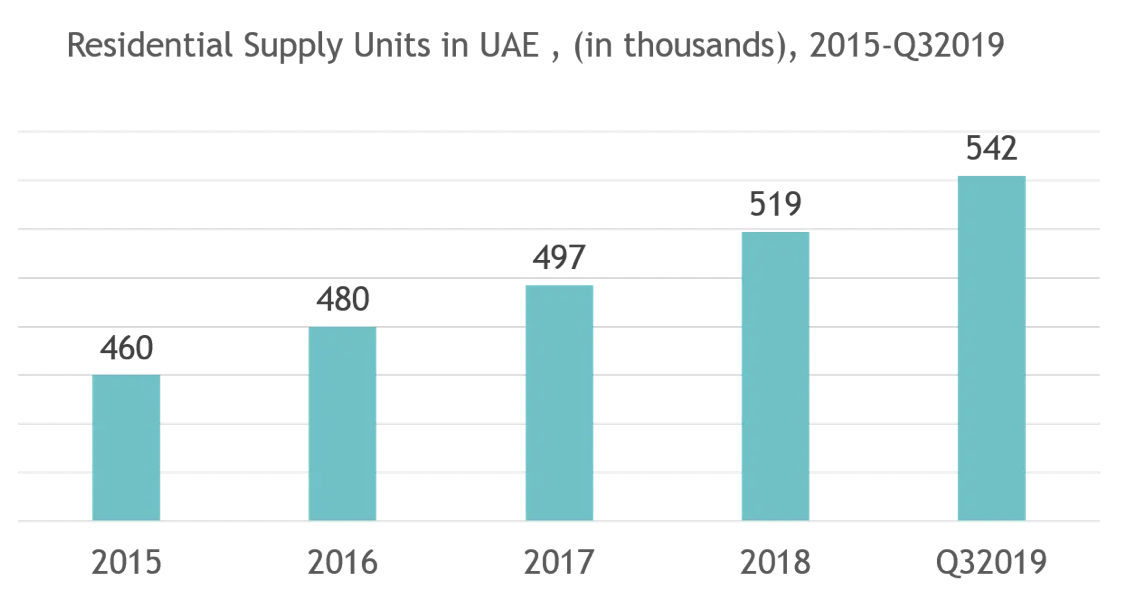
The most obvious consequence of ignoring the changes is a decrease in competitiveness, which will cause the company’s financial collapse. It should be clearly understood that by failing to maintain a presence in the industry market, Betterhomes LLC risks reducing its capitalization. Ultimately, such a phenomenon will affect the ability to pay employees, pay office rents, and the fleet’s performance. It follows that the company’s financial sector will suffer significantly from ignoring the changes. A similar pattern was evident for Betterhomes LLC in the second quarter of 2020, when the COVID-19 coronavirus pandemic disrupted the traditional order of life (Figure 5).
Indeed, none of the smaller companies can foresee such a global scenario affecting supply and demand in the marketplace. In particular, a considerable number of people were forced into self-imposed isolation, and consumer power declined. Most likely, if Betterhomes LLC had initially foreseen the possibility of such an outcome and were prepared to manage the changes urgently, its annual budget would not have shown such a dramatic decline.

Another essential aspect reflecting the effects of resistance to change is the company’s capital and assets. Right now, Betterhomes LLC has some great offices in various areas of Dubai, including a reasonably busy business area. If there is no change, the demand for the company’s services will markedly decrease, which, in turn, will lead to the closure of these locations. Betterhomes LLC will have to sell its properties and close leases, which means there will be a financial crisis of assets for the company.
In addition, one of the most valuable resources of any company is its employees. There is no doubt about the importance of maintaining a stable and ethical corporate culture that increases employee engagement. Thus, Betterhomes LLC staff’s work, based on a strong corporate culture, is characterized by motivation and inspiration. In the absence of these components, the company runs the risk of having unmotivated employees with no desire to work and no passion for career growth. An illustrative example of this aspect is following the trends towards diversity and inclusion of employees.
If racism, intolerance, and ideas of gender superiority are core values in a company’s work code, then conscious employees of such a company will not have the resources or desire to continue working together (Lindberg, Karlström, and Männikkö Barbutiu, 2020). Consequently, Betterhomes LLC’s management must keep the corporate culture relevant and not maintain its traditionalism and stability contrary to employees’ expectations.
Simultaneously, human resource management can be affected by resistance to change from the other side. In particular, a focus on change and a commitment to innovation are critical features of a developed company (Khaola, 2019). These traits are highly valued by job seekers, as traditionalism and ignoring change can be seen as unnecessary conservatism in today’s rapidly changing world. Thus, if Betterhomes LLC refuses to follow change, it risks losing human capital: employees will quit.
In addition, Betterhomes LLC’s reputation will be primarily lost because of its lack of metamorphosis aspirations. It is paramount to recognize that a strong business reputation is important in today’s marketplace. In fact, reputation is what qualitatively differentiates a brand from its competitors and allows it to attract and retain customers. In this regard, it is appropriate to say that having a strong reputation, expressed including through brand history, can be a competitive characteristic of a company. According to a recent study, about half of any company’s market capitalization is built on reputation achievements (Labs, 2018). In other words, a company devoid of attractiveness and interest in the eyes of customers risks not only being unengaged in the marketplace but also being financially illiquid.
A firm’s negative reputation can cause several problems. These include a general decline in revenue, a lack of customer base, and difficulty managing human resources. A lack of reputation — or a negative image — creates a severe crisis for the company that could be remedied through change management. At the same time, the effective manager should remember that reputation is a broad term, and there are no straightforward approaches to its management. For example, in today’s real estate market, online communication platforms in which clients or employees publish their experiences with the brand play a considerable role.
When a new client is looking for an agency to close a deal, a firm’s reputation carries the most weight. Thomas (2018) showed that only one negative review has to be covered by forty positive ones to return the balance. Simultaneously, the overwhelming majority of customers, 87%, compare companies online before the purchase they make (Court, 2017). Based on the above data, it is clear how important it is to create the right positioning and worry about preserving market reputation. In other words, if the commitment to change is ignored, if the company is unwilling to work on identified weaknesses and address adverse effects, Betterhomes LLC can lose its reputation. Loss of reputation, in turn, will naturally lead to the financial, resource, and capital ruin of the company.
Change Management Models
Now that the need for organizational change is no longer in doubt, it is important to discuss its control mechanisms in as much detail as possible. First of all, it is necessary to clarify how significant the crisis caused by poor organizational change management can be. Particularly in the market environment, there are leaders who recognize the importance and criticality of corporate change and even make attempts to implement reforms in working practices.
Nevertheless, inept handling of metamorphosis and change can do even more harm to a company than the lack of it as such (Caprino, 2019). Thus, it is appropriate to identify several primary sources that cause the failure of proactive change projects. First of all, it concerns the manager’s personal beliefs: according to Martic (2020), about 73% of employees do not like to leave their comfort zone and therefore have no experience with change management. This assumption is confirmed by figures from the cited study, according to which only 40% of managers understand the nature of the changes taking place.
The second of the main reasons for organizational transformation management’s failure is the breakdown of communication between employees. A lack of commitment to a common idea realized through a lack of effective cooperation initiates the destruction of structural ties between colleagues, leading to disruptions in work. This is especially important in the face of changing work practices where every process that takes place must be accountable. Thus, when deciding to implement qualitative change in a company, the leader must ensure that the management process runs smoothly and responsibly to not lead to the company’s economic and resource collapse.
The term “change management” can be characterized as a proven, proven methodology used by company leadership to successfully implement a set of organizational transformations to maintain a level of competitiveness. In marketing practice, there are many models and techniques that can be used to manage change. Recognizing the importance of each, this study focuses on the two most progressive and common techniques. The first of these is traditionally considered the progenitor of all other models and identifies the three stages of any change in a company system: Lewin’s management model.
The second methodology, the McKinsey 7S model, is an ideal tool for those companies that are not sure how exactly they need to change but are confident that this is a necessary step. It must be recognized that Betterhomes LLC is one of those organizations.
In his theory, Kurt Lewin identified three phases of change management, as shown in Figure 6. These included “unfreezing,” “changing/moving,” and “freezing.” Therefore, the first stage of transformation, unfreezing, is a preparatory stage that reviews the company’s current situation and recognizes that change is inevitable. It is important to recognize that this stage can be performed either individually or in a group format. In particular, recognizing the need for change can catch up with the individual when gathering useful data, when numbers and statistics show shocking results. On the other hand, the decision about the importance of transformation need not necessarily be spontaneous and can be made by a panel of managers in one of their meetings. A key feature of unfreezing is a quick response to problems and an absolute denial of the possibility of continuing a state of organizational stagnation.

According to Lewin, the second phase of change management is to engage stakeholders and motivate participants. However, it is important to recognize that to implement change it successfully is not enough to have a good idea or to enthuse participants in the process: there is also needed a change strategy that is aligned with the main features of the situation. Thus, following a well-defined strategic plan about the timing, details, and projections of change implementation is one of the three key aspects of the “change” phase. During this phase, management needs to provide appropriate training and support, as many people are involved in the transformation processes.
Consequently, it is necessary to help and reward employees for striving for change to keep them on track. Finally, the third important milestone of the “change” phase is the continuous monitoring of the transformations taking place. Thus, if a failure occurs during the implementation of changes or if theoretical expectations prove unrealistic or partially achievable in practice, this phase must promptly track this and adjust the plan.
The “freeze” phase completes Lewin’s change management model. This phase’s key task is the actualization and consolidation of the perfect transformations and the development of organizational measures to strengthen staff commitment to change. The manager must be convinced that an accidental return to the old states is excluded and all necessary steps have been performed correctly. In addition, to maintain the employees’ incentive for subsequent changes and maintain an effective corporate culture, the “freeze” phase prescribes the need to encourage and motivate the most outstanding personnel.
It is of research interest to determine Lewin’s change management model’s potential applicability to Betterhomes LLC. First of all, it should be noted that as it was found out, earlier Betterhomes LLC does need current transformations and, in addition, this agency has a differentiated workforce of several hundred professionals. Based on these words, it is clear that, in general, Lewin’s theory can be effectively applied to Betterhomes LLC.
The “unfreezing” phase defines the meetings and meetings during which management comes to plan the transformation. Betterhomes LLC has an entire extensive board of directors responsible for unique areas of the business, and therefore, collective, engaged discussion of current states is not out of the question. During the “change” phase, Betterhomes LLC is expected to make significant metamorphoses.
Thus, line managers may be responsible for educating subordinate staff through training and gaming practices. Given the maturity of the company’s corporate culture, as made evident by Betterhomes LLC employee reviews’ meta-analysis, these steps seem feasible. Finally, the “freeze” stage does not prescribe any impossible tasks for the real estate agency but obliges it to motivate its employees. According to the company’s corporate values presented on its official website, it is already the organization’s practice to reward outstanding talent financially, so using this tool in a transformative environment should not be a problem (Your career with us, 2021). Thus, it is easy to conclude that Lewin’s change management model is highly relevant to Betterhomes LLC’s case.
An alternative change management model presented for discussion in this section is the 7S system. In short, this model allows seven fundamental elements of the micro-environment to be analyzed simultaneously in order to form conclusions regarding its effectiveness (McKinsey 7S framework, 2016).
In particular, the McKinsey 7S model helps to determine how well aligned business processes are and how properly resource and asset management are structured. It is critical to recognize that all the elements in question are in balance and that correct and timely management is a guarantee of success. Additionally, it should be clarified that, unlike other popular methodologies, the 7S technique considers the importance of the human factor in business development, not only describing the structure in terms of tangible assets. All of the above forms the philosophy of this organizational transformation management model, which has gained widespread popularity among managers worldwide.
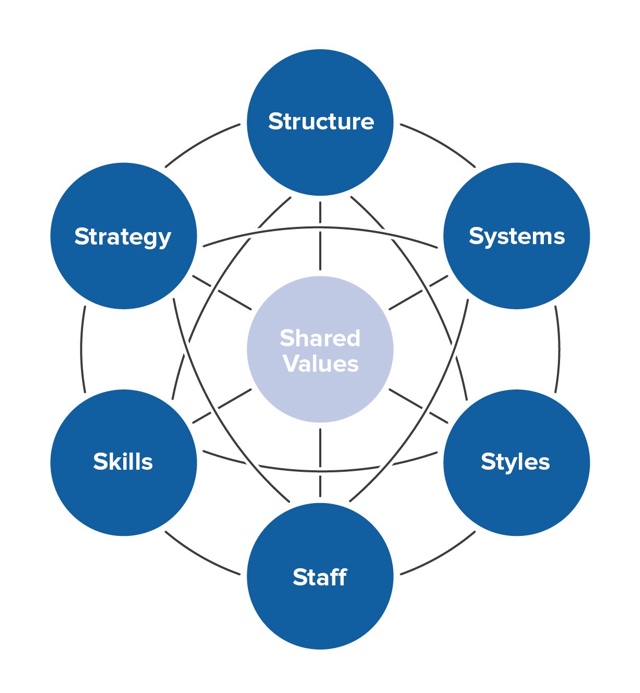
The seven elements of a successful enterprise microenvironment, according to McKinsey, form the strategy, structure, management system, relationship style, employee staff, a sum of skills, and a value system. As it can be seen, the first letter of each component, S, was the determining factor in forming the model’s so memorable name. Moreover, depending on the nature of the elements of the model, it is customary to divide them into “hard” and “soft” elements (Shaqrah, 2018).
Those aspects that are independent of human factors and can be physically changed — and thus are easier to evaluate and transform — form the hard framework of the 7S system. In contrast, elements that are more tied to corporate culture and directly dependent on employees’ personal beliefs and motivations are soft. Furthermore, it is a mistake to think that hard components show dominance over soft ones: on the contrary, if each side of the model is handled skillfully and efficiently, the company gets a tremendous increase in productivity and results in consolidation. Figure 7 shows that the core of the composition is a well-developed value system.
This is not a random decision: in this way, the authors of the management model have shown the unconditional importance of corporate vision and mission, which influence the business processes of the microenvironment.
The next few paragraphs provide a detailed discussion of the concept of this change management model. Only an in-depth understanding of the interconnectedness of the 7S components is necessary further to analyze this system’s applicability to Betterhomes LLC. The set of hard elements forms the system, strategy, and structure that underlies its management. Thus, the system is the sum of the internal processes without which the organization cannot provide products and services. This should include a host of information technology, such as CRM, document management, and financial programs.
Then, the strategy is the second component of the hard subsystem, which forms the plan for the company’s development in the short and long term. When developing a strategy, an effective manager must track the alignment of actions taken with the end goal (Shaqrah, 2018). In other words, a focus on results, gaining a strong competitive advantage is vital for this stage. Finally, the last element of the hard subsystem is structure. Increased attention to this component is necessary for light of recognizing the multifunctionality of the modern company: it represents a system of departments responsible for individual tasks. It follows from these words that the structure’s tasks include establishing the order of interaction between the departments of the firm, defining the principles of hierarchy of authority, competence and responsibility. This is one of the most mobile factors, which means it is relatively easy to influence.
The soft foundation of the 7S system forms the four alternative sides of the model, namely the system of values, the staff of employees, the style of relations between them, and the number of skills. As noted earlier, value systems are placed at the center of McKinsey’s composition for a reason. Through the formation of the mission and the projection of the nature of the corporate culture, values define the founders’ stated idea of the project and the overall vision of the business. It follows from these words that change in this core significantly affects all other subsystems of the company. Hence, a conscious change in the firm’s mission due to organizational evolution or a change in leadership will undoubtedly affect employees and the microenvironment’s internal processes.
Employee composition is the second component of the agile subsystem. It is not difficult to understand that this branch implies the nature of its personnel policy, implemented through HRM. Specifically, this includes motivation and incentive systems, recruitment, training, and retraining of employees. Human resources’ overall skills and abilities form the sum of the skills that determine a company’s intellectual and labor potential.
Obviously, the more talented employees a company has at its disposal, its personnel potential is more valued. At the same time, traditionally above the employees in the hierarchy of responsibility is the manager, whose leadership style determines the relationship style component. The integrity of management methodology, consistency, and predictability are the main criteria for quality leadership (Karagianni and Jude, 2018). In this context, the specific leadership style, whether authoritarian or democratic and the team’s atmosphere are considered.
Therefore, the above components of the 7S system describe the complexity and multi-complexity of the company being analyzed. An in-depth review of each element’s current state allows determining the need for change and building a strategic plan for their implementation. This change management model is perfect for the Betterhomes LLC case, as the real estate agency has a developed corporate culture and value system, which forms the backbone of 7S. A more detailed description of how this model can be applied to the Dubai company is given in the next section.
Developing a Change Management Strategy
An in-depth discussion of the necessary theoretical deductions made in the previous sections can be seen as sufficient for the report’s culminating section, namely developing a change management plan. In particular, for Betterhomes LLC, the need for qualitative change to build a competitive advantage is undoubtedly recognized. However, it is also important to note that change itself cannot occur without stakeholder engagement. Recognizing the heterogeneity and diversity of participants involved in the changes, it is necessary to use a classification model that systematically identifies the stakeholder’s influence and the degree of responsibility (Figure 8). Thus, this section prepares the groundwork for a seamless, stakeholder-driven implementation of future changes within Betterhomes LLC.
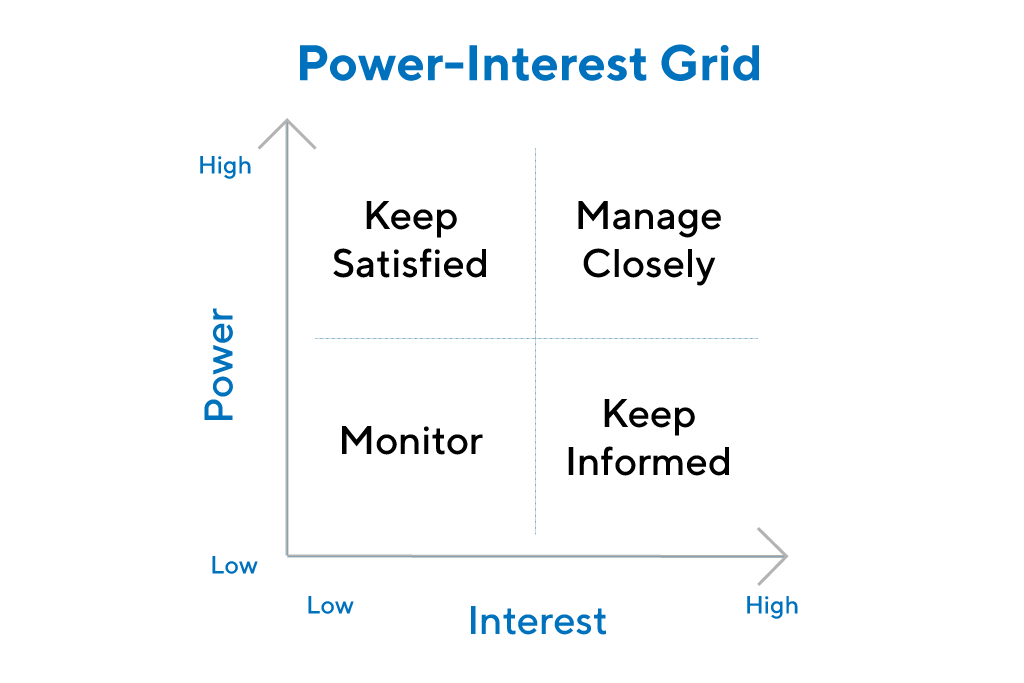
Betterhomes LLC is a consistently growing company in a dynamic market sector in a geographic region that has the potential to become the center of global trade in the next few decades. In other words, Dubai is already an attractive emirate for investment, and the real estate industry is actively developing both by enriching the city and by increasing the local and foreign population. Based on these facts, it can be concluded that the list of Betterhomes LLC stakeholders goes beyond the client-agency system and includes a much larger number of participants. In particular, the firm’s owner and founder, Linda Mahoney, has the most significant interest in the company’s successful and harmonious development.
With more than thirty years of experience owning this business, she is not focused on short-term profits but rather sees the company’s development through expansion and differentiation. The purchase of partnership contracts and the formation of branching out for out-of-town rental properties in 2019-2021 perfectly demonstrates Mahoney’s intentions. The next stakeholder link is the board of directors, represented by more than fourteen highly qualified, gender, and ethnically mixed personnel (Meet the team, 2021). With responsibility for the individual Betterhomes LLC division, each top manager has a stake in the competitive development of both the division and the company as a whole. In other words, the organizational transformations that can lead to agency success shape the directors’ range of personal interests.
In addition, the company’s employees, as its most valuable workforce, have a definite interest in transformational processes. Two reasons can be used to justify this assumption at once. First of all, any company, including Betterhomes LLC, cannot satisfy the needs of absolutely all employees. Some of the subordinates complain about low wages, others about the lack of corporate culture: in the end, employees are left feeling unfulfilled.
Consequently, qualitative changes in the organization’s microclimate are designed to meet all employees’ specific expectations. On the other hand, transformational changes mean improvement and economic progress for Betterhomes LLC: it follows that the real estate agency is expanding and attracting more investment. In other words, in the long run, this development means more career opportunities for employees and the development of compensation programs. Moreover, the employees of a real estate firm, whether agents, sales managers, or attorneys, are interested in better working conditions and job security. Expanding the firm should handle these expectations, and implementing an effective system of intangible and tangible rewards will satisfy the need for employee engagement.
In addition to employees, clients also form a core of change stakeholders. The report has already mentioned negative feedback from the agency’s customers from their experience with Betterhomes LLC, and therefore changes must address the weaknesses (Reviews, 2021). The consumer will receive better price and service offerings combined with a seamless organization of contractual services from the improvements.
Betterhomes LLC is not a public company, which means its shares cannot be bought on the stock exchange. Nevertheless, this does not mean no investors and partners are investing in the development of the agency. Given the Gulf services sector’s growth, it is to be expected that more and more investors are attracted to Betterhomes LLC. In doing so, they expect transparency, sustainable profitability and accountability, and guarantees of commercial development. Consequently, changes aimed at improving the company carry high weight with investors.
A higher level of stakeholders includes local government and authorities. Certainly, UAE authorities recognize the need for expansion, which can be seen in recent urban and technological development projects to improve local people’s quality of life (Carmichael, 2019; Abbas, 2021). Consequently, the authorities are interested in the competent development of domestic companies representing the UAE’s trade potential globally. Simultaneously, the public administration’s apparent expectations are compliance with transparent laws, the absolute impossibility of corrupt schemes, and strict accountability, which Betterhomes LLC can provide. Since this agency operates in the field of real estate, where there is a substantial cash turnover, the company’s management must be responsible for the transparency of transactions.
Finally, an unobvious stakeholder party is Betterhomes LLC’s competitors in the industry market. The abundance of demand for real estate generates a myriad of companies, each of which seeks to win the favor of Arab clients. Thus, Betterhomes LLC’s main competitors are interested in both creating a stressful environment for this agency and its eventual dissociation, as well as forming a fair, competitive environment. In addition, it is essential to remember the fundamental rule of macroeconomics, postulating the mutual relationship of quantity and quality: therefore, the long-term interest of other real estate agencies is to improve the quality of their services, including through vigorous competition.
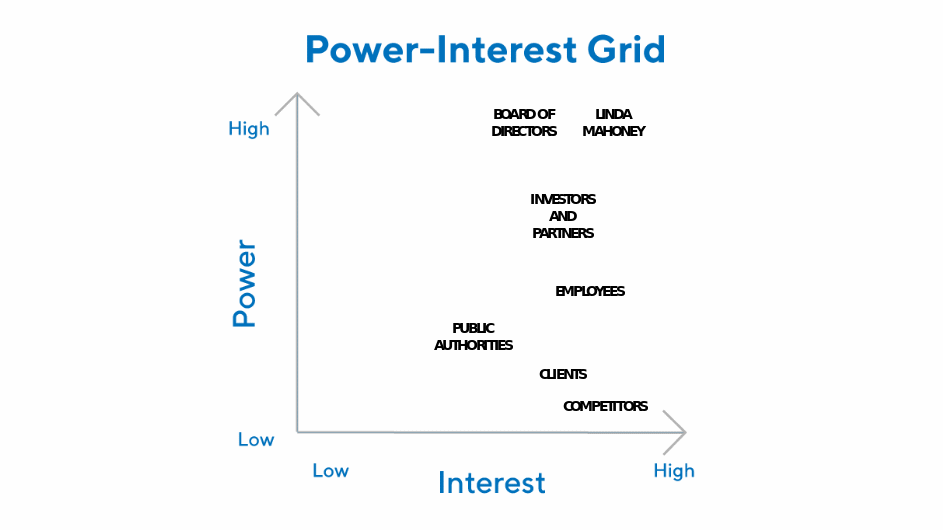
Compiling all the specified stakeholders, it is interesting to label them on the map, taking into account the share of interest and responsibility that each stakeholder has. This visualization is Figure 9, a two-dimensional matrix of which the stakeholders are marked in power vs. interest coordinates. As can be seen from this matrix, the highest interest in Betterhomes LLC is held by its founder, Linda Mahoney, and the lowest, from the entire list of stakeholders, by the public administration.
On the other axis, the power axis, the most powerful tools of control are in the founder’s power and the board of directors, while competitors have no direct influence on corporate decisions. Finally, a plan for implementing transformational metamorphosis for Betterhomes LLC must be developed in light of the stakeholders. For this analysis, the 7S system was chosen, breaking down the entire company structure into seven components. The entire cycle of full-format change can be viewed in five key steps, each of which is necessary for execution.
- The first step involves the ongoing monitoring of Betterhomes LLC by the agency’s board’s upper levels. Each of the seven elements must be examined and described in detail to identify weaknesses and vulnerabilities. Any inconsistency requires attention and detail in the following steps.
- The second step is objectively more difficult because it requires management to have an outlined vision of the organizational structure in which the agency seeks to operate. This involves creating a model that does not yet exist. This phase involves both company management and the views of investors and the firm’s employees.
- The third step of change management involves creating a detailed strategic plan describing the areas that need to be adjusted. For example, if the leadership structure and style do not match the company’s values, it is necessary to rebuild relationships.
- The implementation of transformation is the penultimate step, involving the largest number of stakeholders. The full participation of management, employees, and customers is necessary, too, in order to manage and monitor the progress of implementation.
- Finally, the fifth step involves relentless monitoring of change implementation’s effectiveness, as it is recognized that each of the seven steps may deviate from the intended strategic plan. If necessary, Betterhomes LLC can enlist the help of experienced analysts at this stage to properly implement the changes in the agency structure.
Conclusion
This paper’s critical research concludes that Dubai-based Betterhomes LLC in real estate sales must make organizational changes to remain competitive. In particular, it was discussed that the UAE and Persian Gulf real estate market is dynamic and therefore attracts a large number of competitors. An analysis of Betterhomes LLC’s weaknesses revealed the agency’s strong dependence on the external environment and the company’s lack of an outstanding advantage. The paper conducted a theoretical review of two popular change management models, among which 7S was used for the case of Betterhomes LLC.
It is appropriate to suggest some recommendations that Betterhomes LLC can use for a successful transformation. First and foremost, all company personnel must recognize the absolute importance of change and aim for it. Management must prioritize and thoroughly monitor the current state of all elements of the company. In addition, Betterhomes LLC needs to conduct more frequent competitive market analyses to identify its weaknesses. Lack of advantage is a serious problem that needs to be addressed in the coming months. Management must adhere to corporate values and develop a system to retain current customers while maintaining a highly professional workforce.
